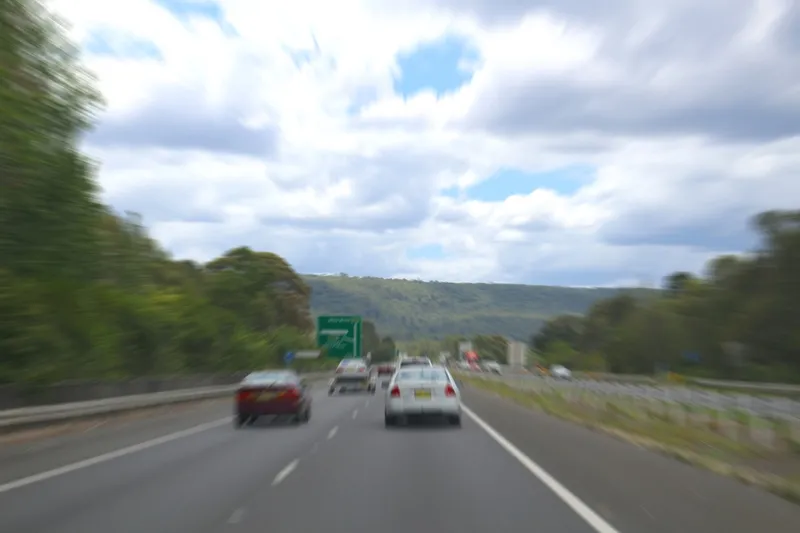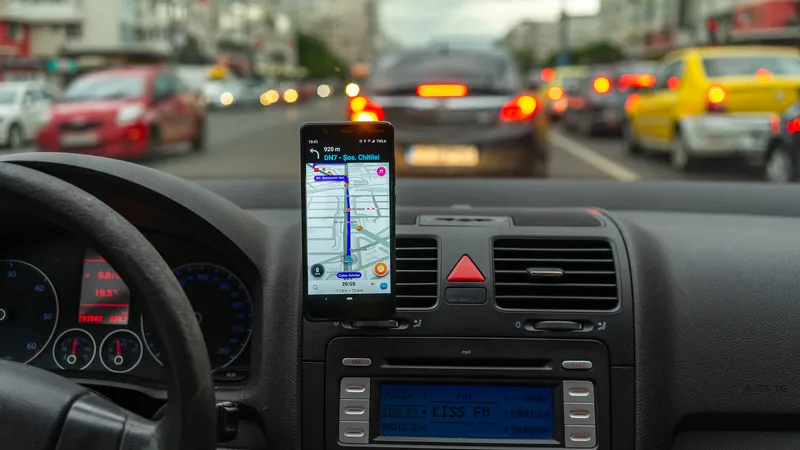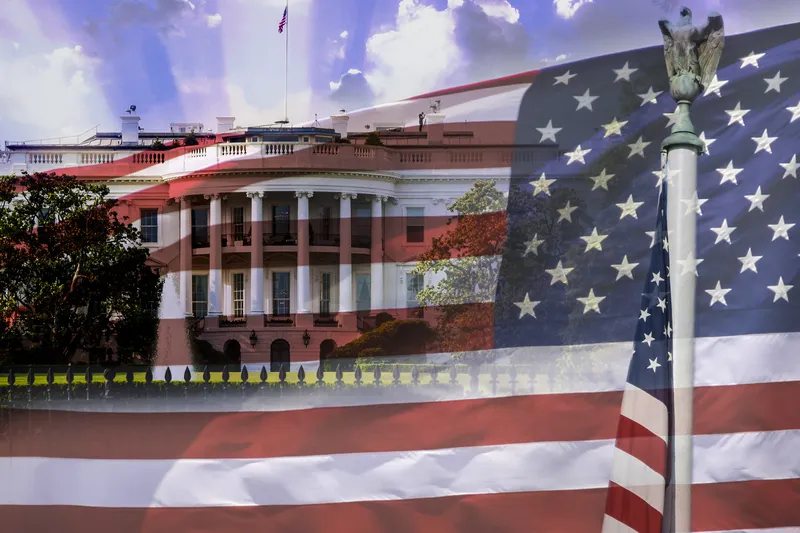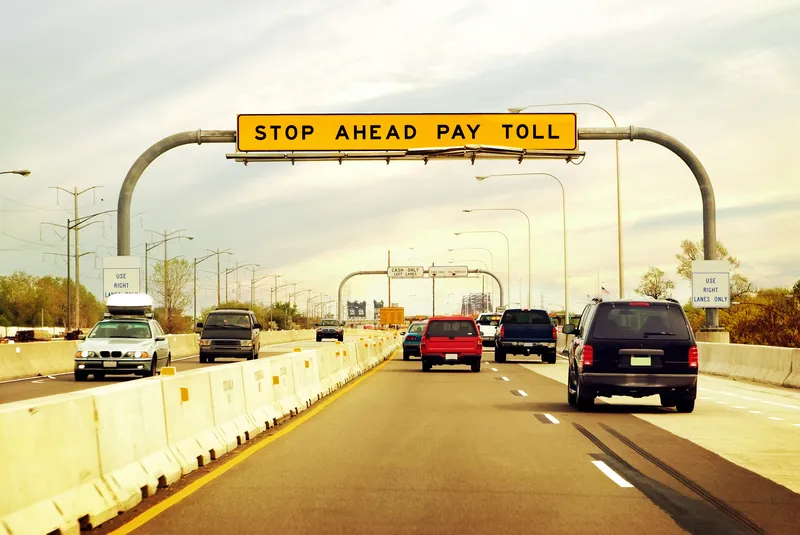
Imagine your daily commute involves three separate toll facilities, each representing a small financial decision—a moment of conscious spending. This happens twice daily, four to five days a week, month after month. While these toll facilities are well-maintained, well-patrolled and reliably save you time compared to tax-funded roads, the costs still accumulate.
This scenario unfolds daily across where I live: Northern Virginia, US. Commuters using the Dulles Greenway pay up to $5.80 during rush hour to travel the 14-mile private toll road. Those continuing to the Capitol Beltway (I-495), Arlington or DC face additional tolls on the Dulles Toll Road and, potentially, I-66 inside the Beltway (if they are solo drivers). In 2023, the Dulles Greenway's owners sought an increase in their peak toll to $8.10—a request that state regulators denied due to significant public objection. For these residents, the prospect of paying over $16 per day for a portion of their commute creates both financial strain and a psychological burden.
“Few drivers know what portion of the price per gallon they pay is the tax, let alone how those funds are distributed”
Welcome to "toll fatigue”. The term describes the growing weariness that drivers experience when confronted with increasing numbers of tolled facilities and rising fees. As urban regions expand and infrastructure needs mount, tolling has become an essential financing tool that will only grow more prevalent. The psychological impact of this hidden tax on our mental bandwidth – its impacts and ways to counter it – is what I address today.

When visibility becomes liability
In the realm of public policy and most aspects of our lives, the simplest solution is often the best one. This idea, sometimes called the principle of parsimony or the K.I.S.S. principle ('Keep It Simple, Stupid'), suggests that simpler solutions tend to be more effective and sustainable. In the context of transportation funding, though, we see a fascinating paradox: the most transparent funding mechanisms – the simplest, clearest and most intuitively logical – seem to face the strongest public resistance.
Tolling is one of the most transparent and direct road funding mechanisms available. It works. The Romans understood this fundamental truth when managing their vast network of roads, bridges and mountain passes. America's first quality thoroughfares were toll-supported ventures. The term "turnpike" emerged from the practice of a pike (or barrier) that was physically turned aside to grant passage, but only after the fee was paid.
“Toll fatigue describes the growing weariness that drivers experience when confronted with increasing numbers of tolled facilities and rising fees”
Still, the mechanism's very transparency contributes to its political vulnerability. Tolls present us all with an immediate, visible cost for the choice we made to use a particular road. This is different from fuel taxes, which are buried within the price you pay at the pump, or vehicle registration fees you pay once a year.
Meanwhile, the opaqueness of traditional transportation funding mechanisms inadvertently shields them from similar scrutiny. Few drivers know what portion of the price per gallon they pay is the tax, let alone how those funds are distributed or spent. The same goes for registration fees. This lack of transparency - rather than hurting - actually helps the agencies that manage these funds avoid the direct public disdain that tolling seems to face.
Subscription economy meets the open road
Toll fatigue doesn't exist in isolation—it's part of a broader pattern of consumer exhaustion with small, frequent payments that have only accelerated in the digital age.
Think about how many subscriptions you have today—streaming services, software applications, meal deliveries, monthly box subscriptions, mobile phone plans. My household has at least a dozen. Twenty years ago, or less, most of the things these subscriptions pay for today were one-time purchases, or purchases paid for with a cheque in the mail. There was friction – you had to go out of your way to purchase the item. Today's economy has fundamentally shifted us toward recurring payment models: "Set and forget."
Tolling has followed a similar evolution. Where drivers once stopped to hand cash to a toll collector or drop coins in a basket—visible, deliberate transactions—today's electronic toll systems automatically deduct small amounts from your (pre-paid) account and auto-replenish without conscious action from the driver. The transactions happen in the background, convenient but less noticeable.
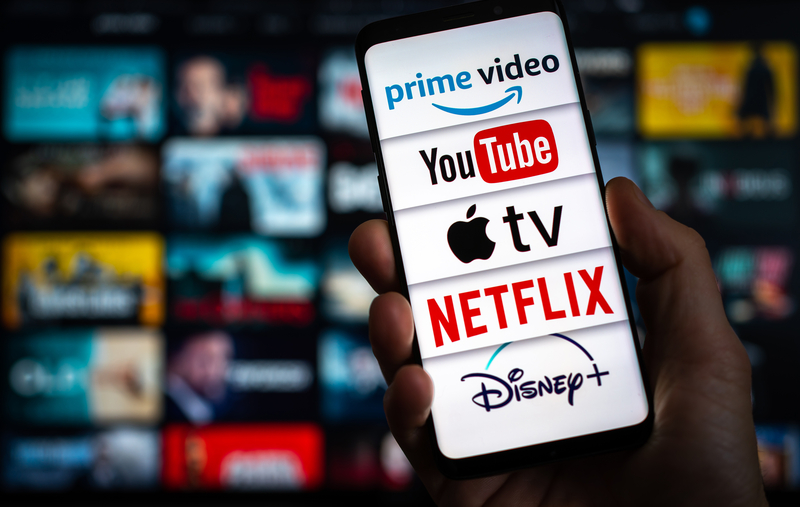
Psychology behind the resistance
Have you ever felt mentally exhausted after a day of making many decisions, even if none were particularly difficult? Psychologists call this "decision fatigue," and it's a well-documented phenomenon. In a tolling context, consider a commuter facing three possible options to get home: a free highway with heavy traffic; a $6 toll road with moderate traffic; or a $15 express lane with light traffic.
This decision point, encountered daily, creates what psychologist Daniel Kahneman calls "cognitive taxation" (Google "System 1 and System 2 thinking"). Kahneman, who won the Nobel Prize in Economics for his research on judgment and decision-making, demonstrated how these repeated mental calculations deplete our cognitive resources and contribute to mental fatigue.
“Tolling’s very transparency contributes to its political vulnerability”
As the number of small charges in our lives increases, we become more sensitive to each additional payment. For instance, a driver might choose a route that takes 20 minutes longer to avoid a $6 toll, effectively valuing their time at less than $18 per hour—well below what most people would consider their time to be worth. Yet this decision makes emotional sense in the context of toll fatigue, where it's not just about this single toll but resistance to "yet another charge”. Resistance that sometimes manifests into action, including political action.
Captive consumer problem
Unlike many subscription services, transportation is essential. Inelastic. Many commuters have limited route options. This makes avoiding the toll difficult or impossible. When Netflix raises prices, one can cancel. When tolls increase on the only fast route connecting home and work, people have few alternatives. This lack of choice amplifies frustration and resistance. Additionally, toll increases often feel disconnected from visible improvements. When your streaming service raises prices, you typically get new content. When the toll increases, the road typically looks the same. This value perception gap contributes significantly to toll fatigue.
External costs of transportation choices
Transportation choices generate numerous externalities – the unpaid costs or benefits that one's actions impose on others. A driver's decision to live 40 miles from their workplace, while potentially reducing their housing costs, creates external costs through increased congestion, emissions and infrastructure wear that aren't fully captured in their private transportation expenses. Tolling represents an attempt to internalise these externalities by making users pay more directly for their infrastructure impact. However, the very clarity of this connection may make these mechanisms more difficult to implement politically, despite their fairness and economic efficiency. So how might we address this? (See below: Practical solutions for toll fatigue).
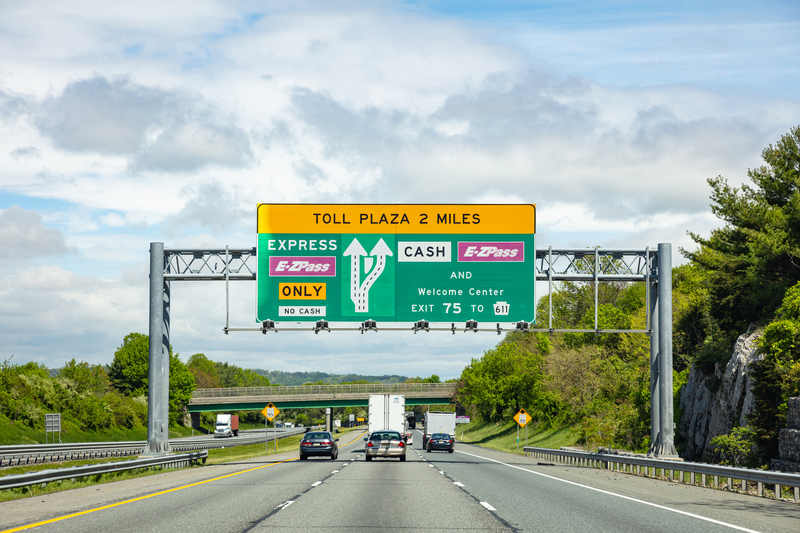
Bridging the gap
Addressing toll fatigue while maintaining sustainable transportation funding requires a balanced approach that recognises both economic realities and consumer psychology. Let's face it - nobody loves paying tolls. But getting past toll fatigue isn't impossible. A thoughtful approach includes:
• Better education about true infrastructure costs across all funding mechanisms
• More transparent communication about where toll revenue actually goes
• Clearer connections between what drivers pay and the improvements they see
The challenge isn't just designing economically efficient funding systems—it's about perception. Ironically, the funding methods that are most transparent (like tolls) often face the strongest pushback, while less visible approaches fly under the radar despite their inefficiencies.
“The toll industry can adapt to create a more user-friendly experience”
Think of toll fatigue as valuable customer feedback, not an insurmountable obstacle. Just as subscription services have evolved to address similar consumer concerns, the toll industry can adapt to create a more user-friendly experience.
Of course, customer education isn't a new concept to toll agencies or the International Bridge, Tunnel and Turnpike Association (IBTTA). These organisations have long recognised the importance of communicating value. The key to moving forward isn't just implementing new educational strategies but enhancing existing ones to more effectively address the psychological aspects of toll resistance.
The future of tolling lies not just in technological advancement but also in the thoughtful implementation of communication programmes that respect user psychology and preferences. When agencies consistently demonstrate to drivers the tangible benefits they receive for their money, that psychological barrier begins to diminish. By proactively addressing toll fatigue, the industry can ensure that the benefits of user-funded infrastructure continue to be realised without creating unsustainable resistance from the very users these systems are designed to serve.
-----------------------------------------------------------------------------------------
Practical solutions for toll fatigue
1. Education
Most drivers have little understanding of what it costs to build and maintain major transportation infrastructure. Educational campaigns that consistently communicate these costs can improve public understanding and acceptance. For example, few drivers know that a single highway interchange often costs $30-100 million, a new bridge can exceed $1 billion, or that road maintenance costs typically run $25,000-30,000 per lane-mile annually. An educational campaign could highlight how toll revenue directly funds specific improvements and maintenance. Something like: "Your tolls at work - widening from four to six lanes between exits 75-93, completed October 2025, $87.5 million."
2. Time savings and reliability data
Abstract concepts like "reduced congestion" usually fail to resonate with drivers. Concrete data showing time savings and reliability improvements do a better job at helping drivers make informed decisions. For our fictional express toll lane, the operator could share actionable information such as:
• Average time savings of 12-17 minutes during peak periods
• 90% reliability for maintaining speeds above 45 mph
• Trip time variability reduced by 83%
When drivers understand that a toll might save them 15 minutes and make travel times predictable, the value proposition is clearer. Time savings displays on dynamic message signs sited before entry points help reinforce this value at the decision point.
“The future of tolling lies not just in technological advancement but also in the thoughtful implementation of communication programmes”
3. Revenue allocation transparency
Customers are more accepting of tolls when they understand how the revenue is used. Transparent communication about revenue allocation builds trust and reduces resistance. Many toll agencies publish detailed annual reports showing exactly how toll revenue is spent, with clear graphics breaking down percentages allocated to operations, maintenance, debt service and capital improvements. This transparency helps users see the direct connection between their payments and the facility's condition.
4. Loyalty and frequency programmes
Rewarding drivers for their consistent contribution to the facility can reduce the perceived burden of paying tolls. Many facilities, including Dulles Greenway, offer volume discounts that can reduce per-trip costs significantly. Other agencies offer more creative approaches such as unlimited use for a fixed monthly fee and partnership rewards with local businesses near toll facilities.

ABOUT THE AUTHOR
Tim McGuckin is a transportation technology & policy consultant


